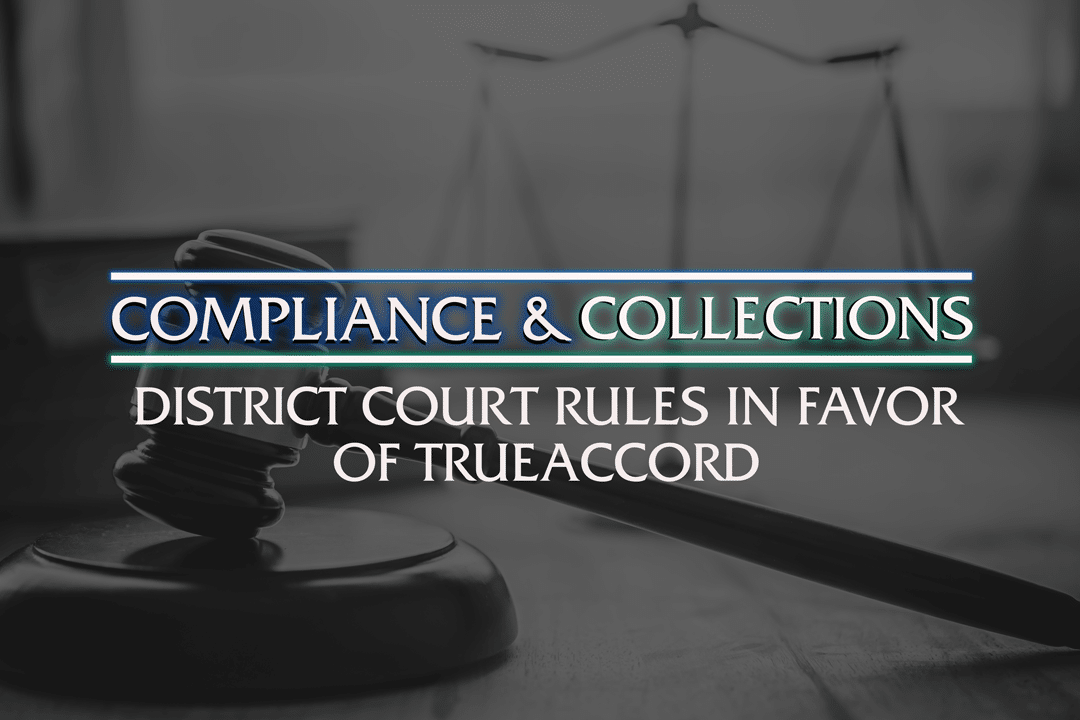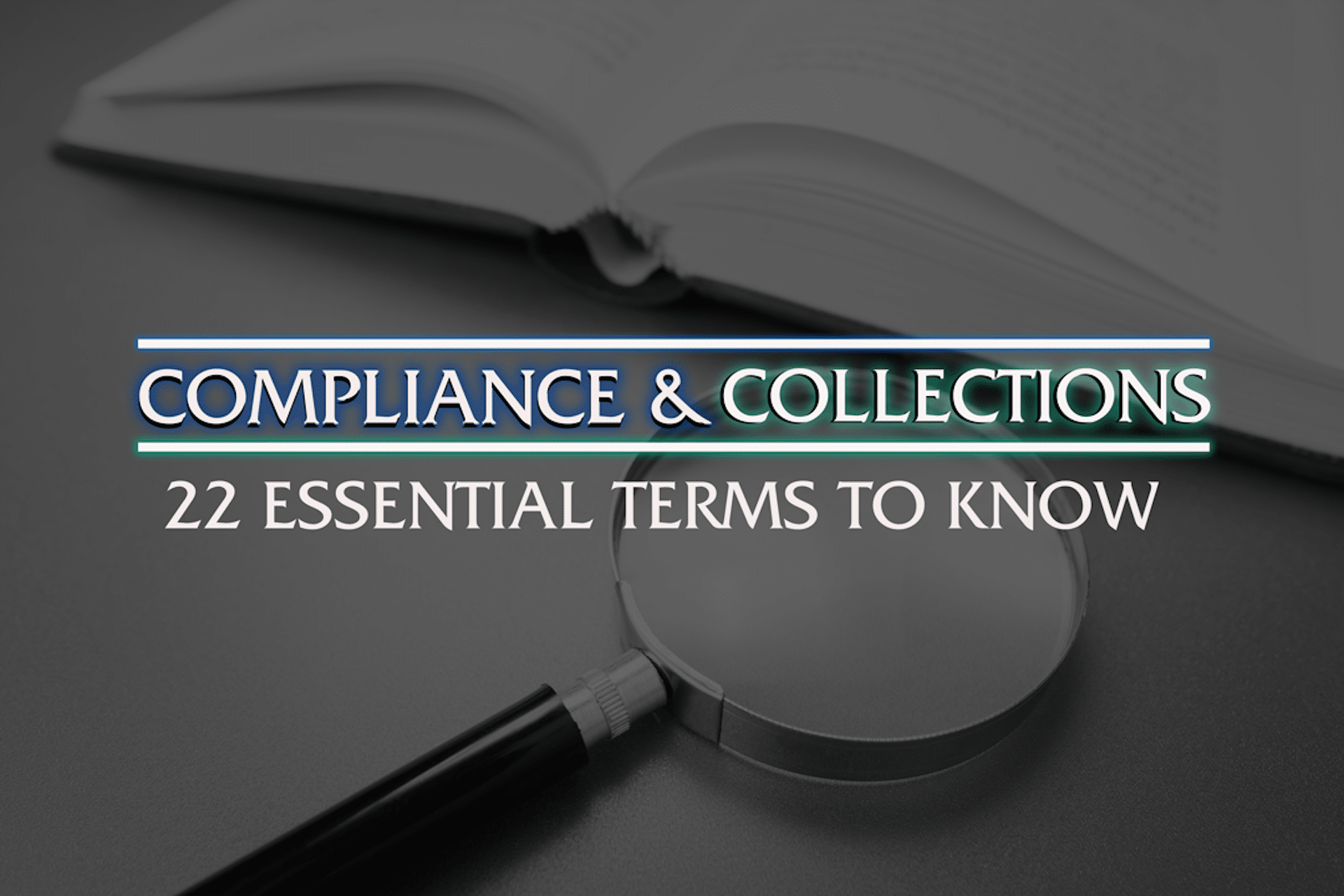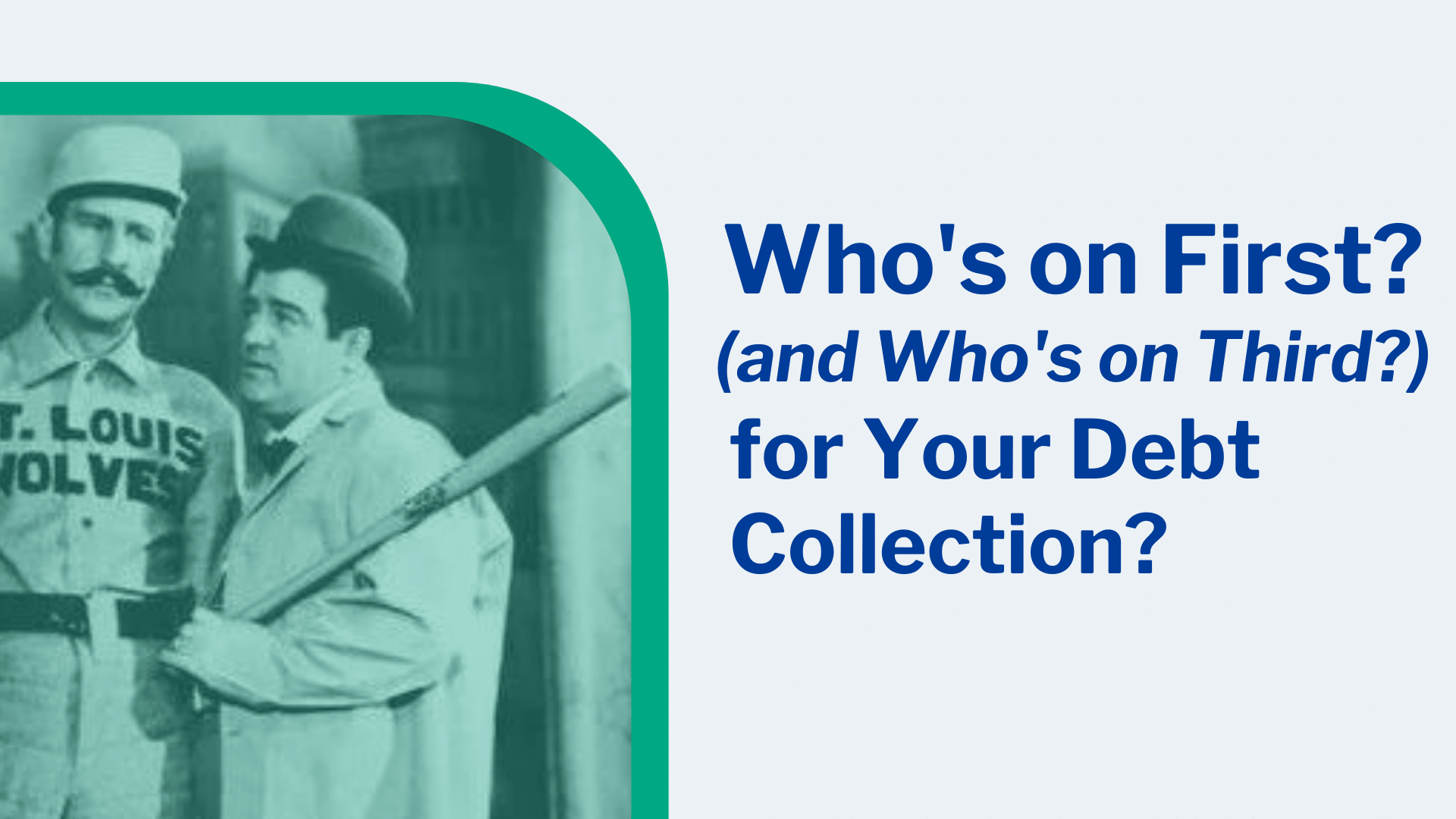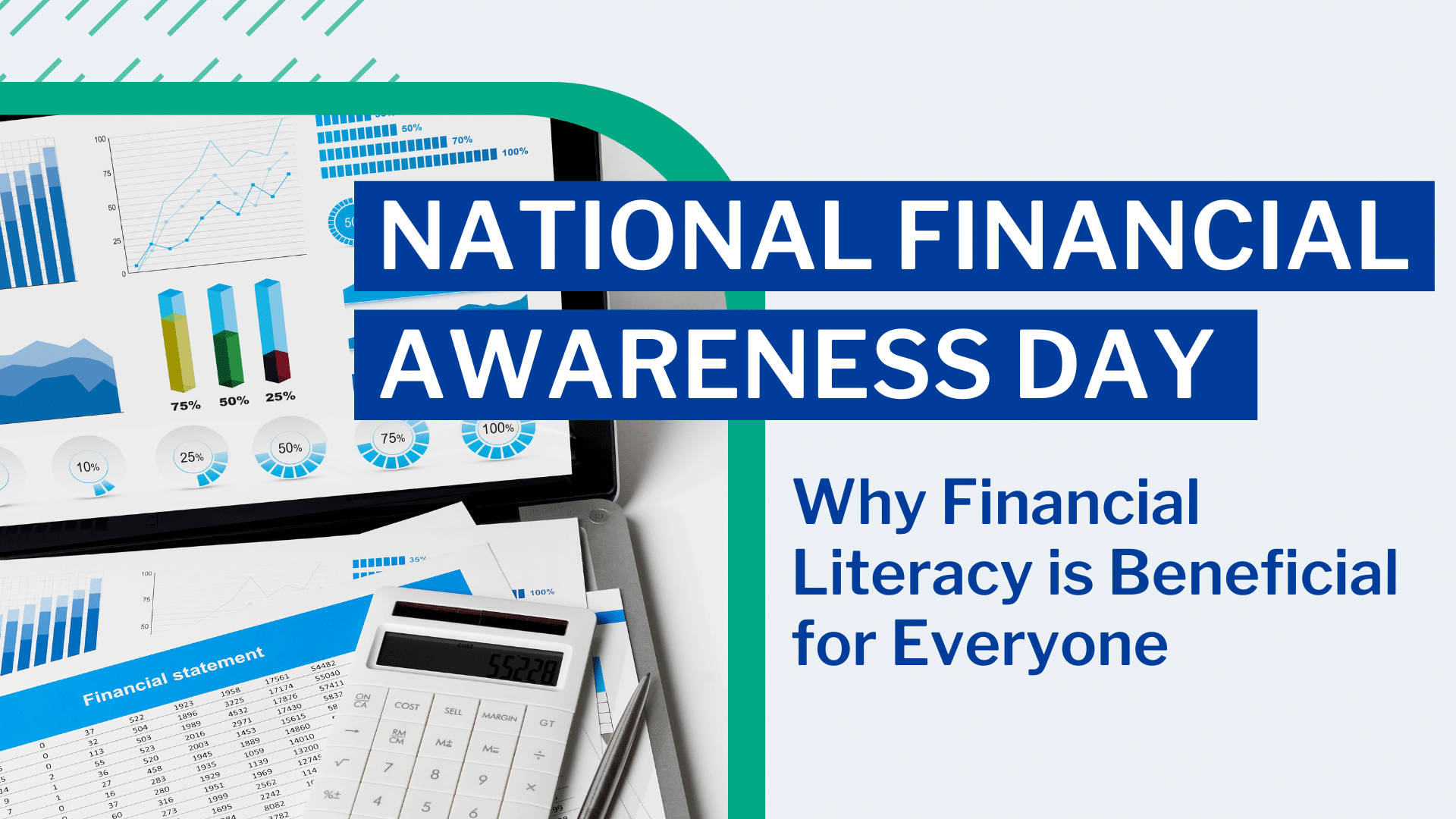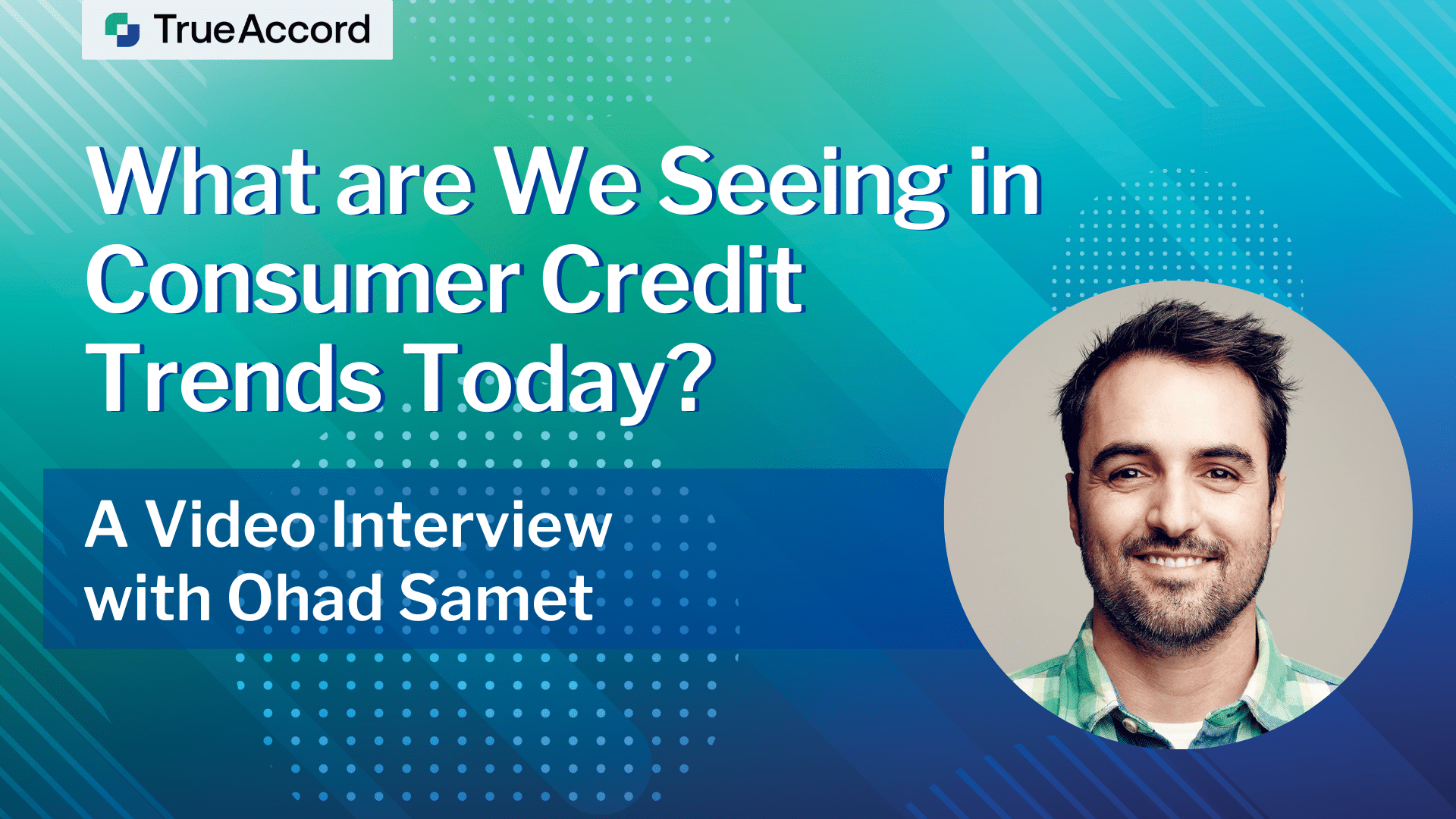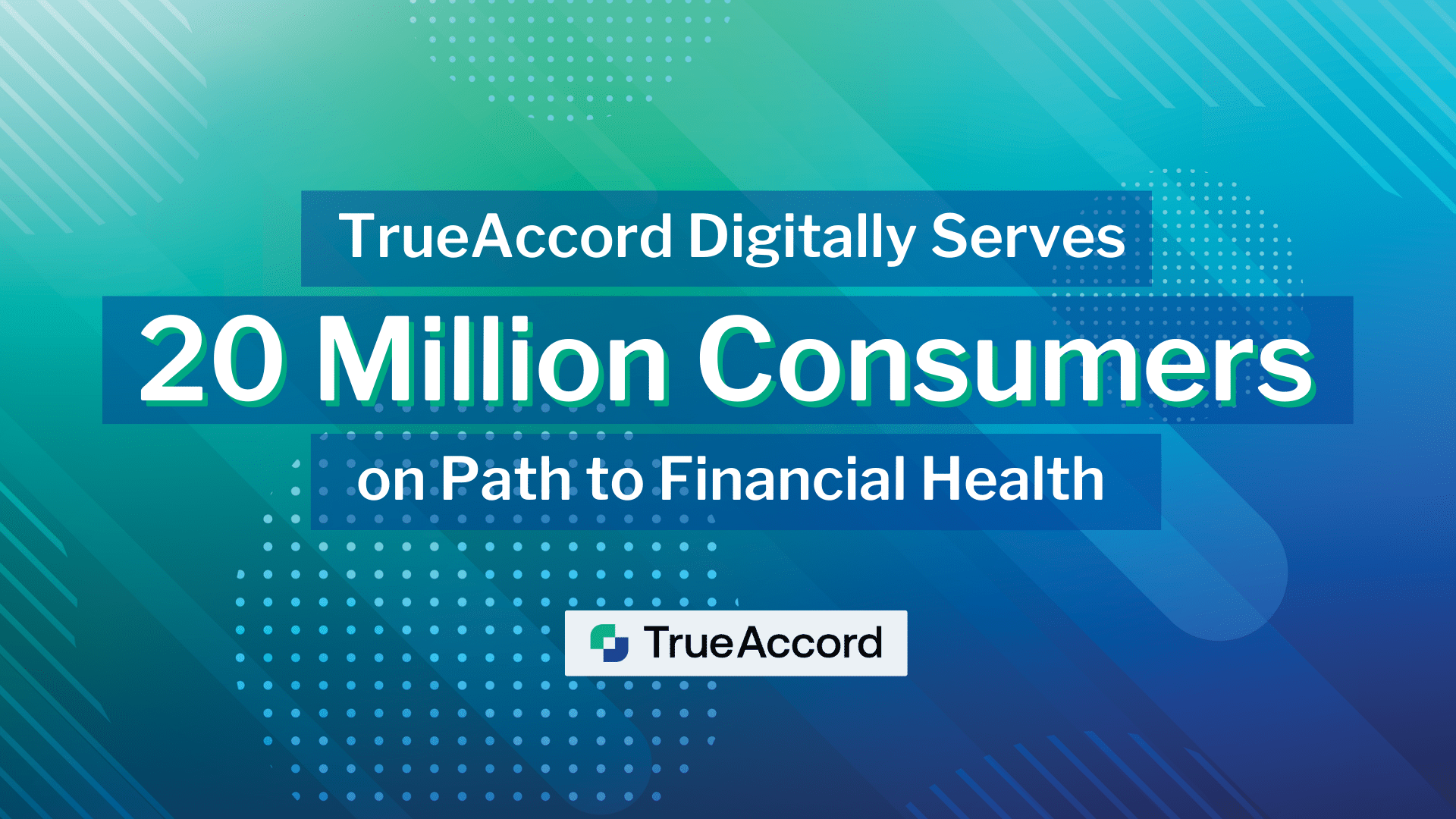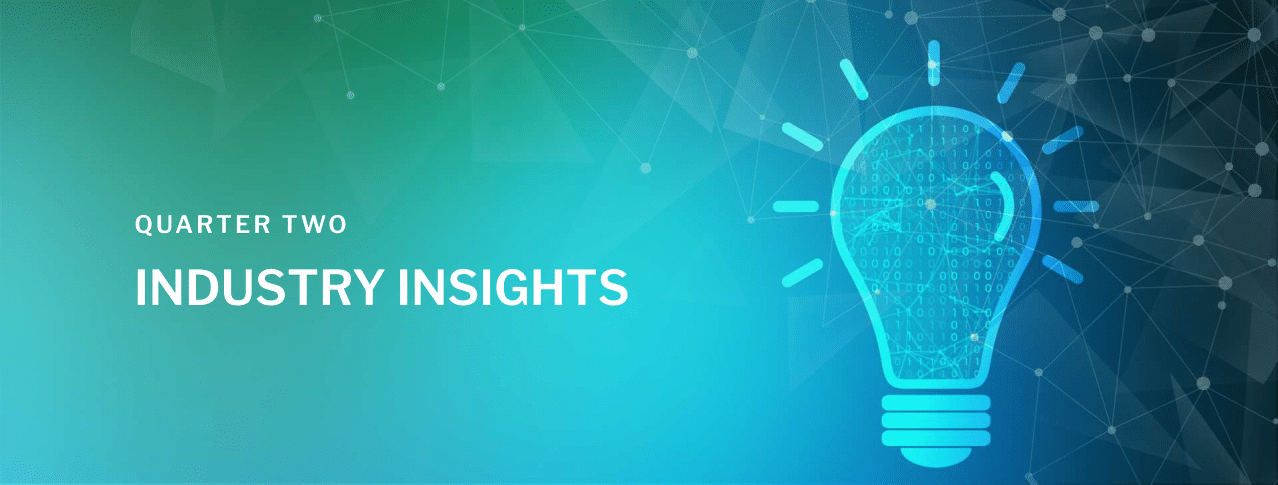District Court Rules In Favor of TrueAccord
A reply email with notice of attorney representation applies only to the individual account A new District Court opinion weighs in on digital debt collection efforts, making clear that a notice of attorney representation provided in reply to an email about an account only applies to that specific account. In Tamika Gilbert v. TrueAccord Corp., Case No.: 1:21-cv-00486, the United States District Court for the Eastern District of Illinois, dismissed the case in favor of TrueAccord. This is another in a small line of cases relating to digital collection of debt. See, for example, the case of Greene v. TrueAccord, in which the court upheld TrueAccord’s use of email for the initial notification, also codified in Regulation F. The Case Ms. Gilbert sued TrueAccord alleging (1) TrueAccord made a false or misleading statement when it failed to inform her that an account was past the statute of limitations and (2) TrueAccord had contacted her after being informed that she was represented by counsel. After conducting discovery, both Gilbert and TrueAccord filed motions seeking summary judgment – a decision by the court without the need for trial that will be granted only if there are undisputed facts that permit a judgment under the law. The parties agreed that: TrueAccord emailed Gilbert on January 10, 2021 regarding Creditor A’s account;TrueAccord emailed Gilbert by email on January 19, 2021 regarding Creditor B’s Account;Gilbert’s attorney forwarded to TrueAccord a copy of the collection email regarding Creditor B’s account, stating, “I am representing this consumer. Do not contact her again.”TrueAccord emailed Gilbert on January 24, 2021 regarding Creditor A’s account. The Ruling The court ruled in TrueAccord’s favor on two grounds. First, the court found that Gilbert did experience harm when she said that the emails caused her to “shake with rage.” The Court ruled that these allegations of physical manifestations of harm were sufficient harm to confer standing to bring the lawsuit. While annoyance, stress, or anger are not sufficient harms without more, an alleged physical reaction to the emotion is sufficient harm for Gilbert to have standing to pursue the second claim. On the merits of the communication-after-notice of attorney representation claim, the Court ruled in favor of TrueAccord and dismissed the claim. The Court found that Section 1692c(a) of the Fair Debt Collection Practices Act prohibits a collector from communicating with a consumer whom it knows to be represented by counsel with respect to such debt. The Court noted that the communication by Gilbert’s attorney was regarding the specific Creditor B account. Absent an express intent to represent a consumer regarding all accounts or a list of specific accounts, TrueAccord’s knowledge was limited to her representation with regard to the Creditor B account only. As the subsequent communication was regarding another account owed to a different creditor where TrueAccord had no knowledge of attorney representation, no violation occurred. TrueAccord did not send any further communications with respect to Creditor B’s account on which TrueAccord knew Gilbert to have counsel. Second, with respect to the claim that Gilbert was confused by the notice stating that the account had passed the statute of limitations for the purpose of filing a lawsuit (a requirement of law), the court found that Gilbert had not alleged sufficient harm to have standing to bring the first claim. The court noted that Gilbert’s damages were the time lost allegedly contacting an attorney regarding the Out Of Statute (OOS) language. While lost time can be an injury that supports a claim, here the time allegedly lost was time was solely time spent consulting an attorney as doing so would permit anyone to create standing by retaining counsel. Key Takeaways This case is important because it reaffirms that attorney representation must be clear to be account specific, not consumer specific. It also adds another in a line of cases finding that a plaintiff must have sufficient harm to have the standing to bring a claim in federal court. These key takeaways from the ruling help further clarify the parameters of digital debt collection communication for both creditors, collectors, and consumers. This wasn’t just a win for TrueAccord, but for the industry as well. Want to learn more about the different facets of compliance in collections? Join us Thursday September 29th at 1pm ET for our interactive webinar, The Future of Collections & Compliance, hosted by TrueAccord Associate General Counsel Lauren Valenzuela and Director User Experience Shannon Brown. Reserve your space now for an interactive discussion on: Cutting edge digital collection complianceThe role of the legal team in creating a digital collection strategyHow cutting edge compliance drives collection revenueThe future of digital compliance Register now for the upcoming webinar»» *Steve Zahn serves as TrueAccord’s Associate General Counsel. This blog is not legal advice. Legal advice must be tailored to the particular facts and circumstances of each unique matter.
Compliance & Collections: 22 Essential Terms to Know
The world of regulatory compliance can be a complicated place, especially when it comes to debt collection. It can be tricky for non-security and compliance professionals. To help quickly get you up to speed on what auditors are referring to, we’ve put together a glossary, covering some of the most important compliance terms and acronyms. Action Plan: A plan to identify and facilitate remediation steps of current operating practices. Audit: An unbiased and comprehensive examination of an organization’s compliance and adherence to regulatory guidelines. Benchmarking: The process of analyzing an organization's performance data and comparing it against the industry standard. Used to see the effectiveness of a compliance program and if there are any areas that need improvement. Best Practices: When law and/or regulation is unclear, a “best practice” policy may be implemented to safeguard a business’s compliance.Bona Fide Error Defense: An unintentional mistake or violation that occurred despite the maintenance of procedures reasonably adapted to avoid the mistake/violation. A debt collector may be able to assert a “Bona Fide Error Defense” in a lawsuit alleging violations of the federal Fair Debt Collection Practices Act (FDCPA). CCPA: The California Consumer Privacy Act (CCPA) gives consumers in California rights over the personal information that businesses collect and process about them.CFPB: The Consumer Financial Protection Bureau (CFPB) is an agency of the United States government responsible for consumer protection in the financial sector.Code of Ethics: A document or guide that is composed of an organization’s values, standards commitments, and a set of principles. Compliance: The state of adhering to established guidelines or specifications such as a policy, standard, specification, or law.Compliance Management System: A series of integrated policies, processes, tools, internal controls, and functions designed to help an organization manage, monitor, and test compliance with applicable laws and regulations (e.g., federal, state, local/municipal). A fully functioning compliance management system is designed to continuously minimize risk, prevent consumer harm and limit financial or reputational harm to the organization. An essential in the modern business world.Compliance Risk: Captures the legal, financial, and reputational dangers for failing to act in compliance with laws and regulations.Conflict of Interest: A conflict that happens in a decision-making situation in which an individual or organization is unable to remain impartial and where serving an interest would harm another.Controls: A checks put in place to ensure compliance with a policy and procedure. A control could be automated or manual. Dodd-Frank Act: Dodd-Frank Wall Street Reform and Consumer Protection Act is a US federal law that governs the financial industry by enforcing transparency and accountability with rules for consumer protection, such as its Unfair Deceptive Acts and Practices provision. FDCPA: The Fair Debt Collection Practices Act (FDCPA) is a consumer protection law passed by Congress in 1977 to eliminate abusive debt collection practices and insure that those debt collectors who refrain from using abusive debt collection practices are not competitively disadvantaged.Fraud: The act of intentionally lying and cheating in order to obtain an unauthorized benefit. Governance: A formal framework made up of policy rules, processes, procedures and controls used to control risk and ensure accountability and transparency. Gray Area: A situation where the rules are not clear and can be open to interpretation.Regulation F: A rule implemented by the Consumer Financial Protection Bureau (CFPB) providing rules governing activities covered by the Fair Debt Collection Practices Act (FDCPA). It seeks to clarify and expand on the FDCPA, including requiring collection agencies to provide additional information to consumers as part of the validation disclosure and clarifies rules for the use of digital communications. Remediation: The process of recognizing a compliance issue or deficiency and implementing an action plan to correct the deficiency or enhance/strengthen an area of compliance. For remediation to be successful, the new or revised policies, processes or controls must address the deficiency or issue and to minimize risk. Risk Assessment: The process of identifying and analyzing all potential risks that an organization can face in relation to its legal and regulatory obligations. The results of risk assessments are prioritized based on severity and then used to determine areas of focus for risk mitigation.Safe Harbor: A provision in a statute or regulation that protects against legal or regulatory liability in situations where the safe harbor provision conditions are met.Transparency: The act of being open and honest while disclosing as much information about policies, procedures, and activities as possible. Now armed with your glossary of terms, get ready to investigate the world of compliance in collections further in our upcoming webinar. Join us Thursday, September 29th at 1pm ET for our interactive webinar, The Future of Collections & Compliance, hosted by TrueAccord Associate General Counsel Lauren Valenzuela and Director User Experience Shannon Brown. Reserve your space now for an interactive discussion on: Cutting edge digital collection complianceThe role of the legal team in creating a digital collection strategyHow cutting edge compliance drives collection revenueThe future of digital compliance Register now for the upcoming webinar»»
Who’s on First (and Who’s on Third) for Your Debt Collection?
What is your core business? It probably isn’t chasing down delinquent accounts—and it shouldn’t be. Attention, resources, and bandwidth should be dedicated to what drives revenue and pushes your company’s goals forward. But delinquencies are a reality for any business that handles payments. And when a customer misses a payment on the due date, you shouldn’t let their delinquency slide for too long, otherwise before you know it, that delinquent account will eventually get charged off and considered a loss. While charge offs aren’t completely unavoidable, ineffective recovery efforts on those defaulted, post-charge off accounts (typically handled by a third-party partner) are completely avoidable. Effective pre-charge off (also known as first-party) collection efforts are just as important as well. For today’s consumers, that means engaging with them in more innovative ways outside the traditional call-and-collect methods and moving into a more digital approach. But without a consumer-centric strategy for both pre- and post-charge off accounts, digital outreach can stumble just as easily as an inexperienced call center rep on their first day—ineffective or even damaging to customer relations. So what do effective strategies look like for first-party and for third-party debt collection? Let’s first take a look at the nuances to consider between first-party and third-party collections. First-Party vs Third-Party Collections—What’s the Difference? First-PartyFirst-party refers to using the creditor’s brand in customer communications. The focus is on remediation of newly delinquent accounts and getting the customer back on track. The communications address the part of the loan that is late, which is often not the whole amount, and refer the customers back to the creditor’s call center, payment portal, or online account system. Third-PartyThird-party refers to outsourcing collections through a third-party partner on the entire balance of the account. At this point, many creditors believe the customer relationship has been lost—but this does not have to be the case with the right digital strategy! First or Third—Customer Engagement is Key to a Homerun in CollectionsFor both first- and third-party collections, success hangs on reaching each customer with the right message, through the right channel at the right time. This can be no small feat for smaller in-house teams attempting to recoup pre-charge off debts. And how can you trust that your third-party partner is actually engaging with customers in the best way possible? So Who’s on First and Who’s on Third for Your Debt Collection? It may seem like a silly question: who is on top of your first-party, early delinquency collection communications? Many companies assume that they must handle pre-charge off collection efforts completely by themselves or by outsourcing with a first-party company, but there are communication alternatives such as TrueAccord’s Retain. Retain is the client-branded pre-charge off digital engagement product, directing customers back to you enabling your customers to choose the right time, place and channel to contact you. Improve your cash flow, reducing losses and allowing you to spend more time and energy on core business objectives. Learn more about first-party communications, including the top 10 questions to evaluate your current strategy, in our new eBook the Buyer’s Guide to Digitally Engage Your Past-Due Customers»» While third-party, post-charge off collections may feel more “out of sight, out of mind” than first-party since organizations outsource to third-party vendors, it’s still crucial to have a comprehensive digital communication strategy that aligns with individual business standards. TrueAccord goes above and beyond with Recover, our late-stage collection solution that proves digital-first delivers: 96% of consumers who resolve with Recover do so using only self-serve digital tools. Learn how to evaluate your third-party collection partners, including the top 10 questions to ask vendors, in our new eBook the Buyer’s Guide to Effective Third-Party Collections»» TrueAccord’s mission to help organizations recover more (from happier consumers) is comprehensive for both first-party, pre-charge off and third-party, post-charge off, whether using one or both intelligent digital-first solutions together.
How Buy Now, Pay Later is Transforming Online Shopping With Gen Z
Buy Now, Pay Later (BNPL) plans have taken over as a popular financing option for consumers, partly due to an increase in online shopping demands during the pandemic. In 2021, Americans spent more than $20 billion through BNPL services, taking up a bigger part of the $870 billion-a-year online shopping market. From laptops and airline flights to clothing and furniture, BNPLs make it simple to pay for almost anything in small installments. Since the start of the pandemic, millions of international consumers, especially Gen Z (10-25 years old), have gravitated toward using this service. According to a study by Forbes, BNPL use among Gen Z has grown 600% since 2019. The rise of interest in BNPL is also likely influenced by increased financial uncertainty, high-interest rates and a downward trend in credit card approval. As consumers show preference for digital financial services, BNPL continues to grow and become available at more retailers. Why are BNPLs Popular with Gen Z? Services like Afterpay, Klarna, Affirm and others have gained a lot of popularity in recent years, especially among younger generations who may struggle with cash flow. With BNPL, the first payment is due at the time of purchase, with subsequent interest-free payments usually due within a few weeks or months. More and more, BNPL providers are reaching these younger audiences through influencers and brands on TikTok, and the variety of goods and services you can purchase with the service continues to expand. Some popular buy now, pay later items include clothing, concert tickets, cosmetics, electronics, furniture, groceries, hotels and flights. But, like credit cards, missing payments can result in late fees and other penalties. With Gen Z, there’s already a pattern of missing payments. A survey conducted by Piplsay showed that 43% of Gen Zers missed at least one BNPL payment in 2021. Gen Z Favors BNPL More Than Other Generations Debt types and payment preferences constantly change along with technology. The traditional credit card debt is being replaced by BNPL, specifically when we look at Gen Z. For one, it’s easier to be approved for a BNPL application since the process only requires a soft credit check, unlike a hard credit check that most credit card issuers require. When looking for an alternative to high-interest credit cards, BNPL installment payment plans are a popular option. BNPL consumers know upfront what will be expected of them, and the possibility for large debt build-up is replaced with a finite number of payment installments. This transparency and manageability make it easier to understand. And it’s one that has the potential to continue to evolve for the better by providing consumers with more inclusive credit and payments options. When it comes to both luxury and essential purchases, younger consumers are more likely to take advantage of BNPL to afford them. A survey from TrustPilot found that 45% of consumers between the ages of 18 and 34 were likely to use such services for basic essentials while 54% would use them for luxury items. For those aged between 34 and 54, these results were 33% and 38% respectively. And for people aged 55 and up, the results were 16% and 24%. Since it’s quite easy to sign up for one or more BNPL loans, the likelihood of losing track of payments or overspending is real, especially for Gen Z. According to a report from J.D. Power, about one-third of younger consumers said they spent more than their budget allows with BNPL. And since different retailers offer financing through various BNPL services, it can also be a challenge to track multiple accounts at once. This isn’t surprising as some of the younger generations do not have the financial literacy or experience that older generations have and they’re more likely to face consequences and penalties like missing a payment. Meet Gen Z Where They Are to Effectively Recover More The good news is that the outlook for Gen Z BNPL customers that end up with accounts in collection is different than for those who default on credit card debt. On average, BNPL debts see higher and faster repayment rates than similar-sized credit card debts. Higher engagement leads to better repayment rates. According to TrueAccord data, the percent of BNPL customers who make a payment is more than double the like-size credit card accounts at 30 days post placement and 50% higher at 90 days. As a debt collection platform that engages digital-native consumers where they are and with a priority on customer experience, many leading BNPL providers partner with TrueAccord to address both early delinquencies and charged-off accounts. After these BNPL customers repay their loans and have a positive experience, they're able and likely to use the service again, and this time with some experience about how it works. By using this information, TrueAccord can help find the most optimal ways to reach the younger audience and help them pay off their debt from BNPL. Want to learn more about how to engage with consumers of any generation in whatever stage of collection they might be in? Schedule a consultation to see what TrueAccord’s digital solutions can do for your debt recovery strategy. Further Reading: TrueAccord Report: Buy Now, Pay Later, Consumer Preference and Collections OutlookKlarna Report: https://www.klarna.com/us/blog/category/mindful-money/ Dave Ramsey: https://www.ramseysolutions.com/dave-ramsey-7-baby-steps
What do the CFPB’s Updates to the Regulation F Electronic Communications FAQs Mean for Your Debt Collection Strategy?
The Consumer Financial Protection Bureau (CFPB) quietly published on its website additional frequently asked questions (FAQs) on the Debt Collection Rule (i.e. Regulation F) relating to electronic communications and communicating during unusual or inconvenient times or places. The FAQ answers multiple questions, ranging from “is a debt collector required to honor a consumer’s request to opt out of electronic communications if the request does not conform to the debt collector’s opt-out instructions?” to “does an automatically generated electronic communication (such as a payment confirmation) sent at a time the debt collector knows or should know is inconvenient to the consumer, which is sent in response to a consumer action (such as a payment), meet the limited exception for responding to consumer-initiated contact?” While many of the responses to the FAQs can be found in the Official Interpretation section of Regulation F, there are some points worth highlighting: A consumer is not required to use the debt collector’s preferred or stated opt-out method. This means, for example, an email opt-out can come from a non-email channel, an SMS opt-out can from a non-SMS channel, etc.A consumer does not need to use specific terms contained in a debt collector’s opt-out instructions in order for their opt out to be effective. For example, if the instructions tell a consumer to reply with “stop” to opt-out, and the consumer replies with “quit” instead of “stop,” the debt collector must still honor that opt-out.Email addresses and mobile telephone numbers are not necessarily associated with a “place.” This means that the prohibition on communicating or attempting to communicate at unusual or inconvenient places does not prohibit a debt collector from communicating or attempting to communicate with a consumer through email or mobile phone. However, if the debt collector knows, or should know, that the consumer is at an unusual or inconvenient place, then the prohibition still kicks in. What should creditors look for in their debt collection partners? Creditors should check to see if their debt collection agencies train their staff and design their processes so that they promptly and effectively identify and process opt-out requests. Since opt-out requests can come in various forms and fashions, debt collectors need dynamic procedures to capture any and all opt-outs. Debt collection agencies also need processes and technologies to help them implement controls for inconvenient time and place restrictions - which may be a little tricky when applied to email and mobile phone numbers. What is TrueAccord’s take? At TrueAccord, our goal is to make the debt collection experience friendly and easy for consumers. That is why we engage consumers on their preferred communication channels and make it easy to opt-out of electronic communications. We take a broad approach to honoring a consumer's opt-out request no matter how we get it or what specific words they use. While the new FAQs clarified that the Debt Collection Rule does not require debt collectors to communicate electronically with consumers, we pose this question back: If a consumer reaches out to you electronically, why wouldn’t you want to communicate with them on the channel they prefer? Start evolving your consumer engagement and communication strategy to meet your customers where they will be most receptive. Schedule a consultation to learn how TrueAccord can help you get started»
National Financial Awareness Day: Why Financial Literacy is Beneficial For Everyone
August 14 is National Financial Awareness Day, making it an appropriate time to shine a spotlight on initiatives that can help improve consumer financial awareness in the collections space. Financial literacy is an essential life skill that benefits people throughout their lives, but is often overlooked when it comes to what happens if a payment is late or missed. Financial literacy during delinquency is just as important as planning for the future—and can even play a big part in financial future-planning. Whether it’s taking out a loan, buying a house, saving for retirement or purchasing goods on a credit card,, people are constantly being asked to make decisions that affect their personal finances. As reported by the Milken Institute, only about 57% of the American population is considered financially literate. In order to address this gap, lenders are in a unique position to help provide customers with educational content that not only improves customers’ financial literacy but helps with their own retention and acquisition strategies by building and maintaining customer trust and loyalty. Providing consistent outreach—especially in early delinquency—will give customers more opportunities to engage, understand, and resolve debt. Debt levels are on the rise again: according to the New York Federal Reserve, between the national student loan debt topping $1.6 trillion in 2022 and household credit card debt also climbing, we’re seeing the largest quarterly increase in 22 years at $860 billion. And individuals become more susceptible to going further into debt if they don’t have a solid foundational understanding of what happens when they first fall behind. Overall, lower levels of financial literacy end up contributing to increased rates of bankruptcy, defaults, and foreclosures. As financial services leaders know, maintaining customer relationships—including accounts in early delinquency—is more profitable than writing off bad debt due to ongoing loan and credit losses, and then having to start the acquisition process for a new customer all over again. The Receivables Management Association International (RMAI), a non-profit trade association for businesses in the financial services industry, understands this gap and the need for increased literacy created a website with many useful literacy resources for consumers offering free education on topics like managing personal finance, money, and investing. By sharing tools like this or taking on an array of education initiatives and implementing financial literacy as a component of your debt recovery strategy, businesses can help their customers regain their financial health. TrueAccord is a certified business through RMAI’s Certification Program requiring an independent audit to confirm compliance with a set of rigorous uniform industry standards of best practice which focus on the protection of the consumer. Interested in learning how TrueAccord can help create a customizable user-beneficial experience for your customers? Schedule a consultation to see what TrueAccord’s digital solutions can do for your debt recovery and education strategy»»
What are We Seeing in Consumer Credit Trends Today? A Video Interview with Ohad Samet
The financial landscape for both consumers and businesses is particularly uncertain right now. Many new fintechs and neobanks are experiencing their first delinquency surge and others soon to follow. This year, the challenges of managing delinquencies and navigating an uncertain economy will compound, making it imperative for companies to critically think about their strategy to collect from consumers in debt. But from the perspective of a seasoned veteran of the financial services industry, what are we really seeing in consumer credit trends today? And what should businesses really be preparing for tomorrow? We sat down with TrueAccord co-founder Ohad Samet to get his insights on what we’re seeing in consumer credit trends today, managing delinquencies, and how to navigate in this economy. Watch our interview or read the transcript below»» https://youtu.be/cRWbiIECQcI What are we seeing in consumer credit trends today? OHAD SAMET, TrueAccord co-founder:I think we all notice that we're dealing with a lot of lagging indicators in terms of consumer capacity to pay. Of course, one leading indicator is demand for credit. But in terms of what consumers are able to do—meaning their sentiment—are they willing to pay? Are they able to pay? Do they have enough disposable income? So many of these numbers are trailing indicators.However, consumer net worth is still high. Why is that? It's because stocks in primary, the value of primary residences, is calculated in the net worth of consumers. And so if you believe there was a bubble or just a run up in prices because of a lot of demand and very low supply, then that would artificially inflate the net value or net assets of consumers, and we will only discover how consumers are faring realistically in a few months.Even if from a trailing indicator perspective, meaning delinquencies, net worth and so on, we are not seeing a drop yet. We're only seeing banks increase their loss reserves in anticipation for losses.We are definitely seeing a change in consumer sentiment. It can be because they're running out of money. It can be because of general sentiment in the market. Inflation is up, risk is up, consumers start saving more—but we are definitely seeing that. And that, to me, is a leading indicator that we all need to be aware of. Interested in learning how you can get ahead and prepare for delinquencies before they happen? Schedule a consultation to learn how TrueAccord can help you get started on your collection strategy»
TrueAccord Digitally Serves 20 Million Consumers on Path to Financial Health
With more than 20 million consumer accounts serviced through intelligent, digital-first collections products, results show better repayment and happier customers than “call to collect” agencies LENEXA, Kan., July 12, 2022 -- TrueAccord Corp, a debt collection company using machine learning-powered digital recovery solutions, today announced that it has served more than 20 million customers in debt with a digital-first experience. TrueAccord's customer-centric approach and commitment to creating a positive consumer experience is reflected in its 4.7 Google customer satisfaction rating, customer feedback, and an A+ rating with the Better Business Bureau. TrueAccord’s collection solutions harness machine learning and digital-first communications to deliver a personalized, consumer-friendly experience for those in debt. As is the nature of machine learning, the system dynamically analyzes and refines the approach used for each customer based on their interactions combined with years of previous engagement data in order to deliver the most effective communication treatment. The patented system, HeartBeat, which is now 20 million customer engagement interactions strong since its 2013 inception, continues to optimize with each new customer interaction. “Machine learning is only as good as its data sources, and with more than 20 million accounts’ worth of engagement data that informs the HeartBeat system, we’re confident that the experiences being delivered are as streamlined and as aligned to consumer preferences as possible,” said Mark Ravanesi, CEO of TrueAccord Corp. “As a mission-driven company, we prioritize creating better experiences for consumers in debt, and based on our high customer satisfaction and repayment rates, it looks like we’re making significant progress.” Powered by TrueAccord’s industry-leading tech stack, the product suite includes Retain, a client-branded early-stage consumer engagement platform for managing pre-charge off debt, and Recover, a full-service debt collection solution. Key benefits of both products include a simple, intuitive and effortless-to-use digital platform leading to great user experience, constant A/B testing and optimization to reduce friction and boost conversion rate, infinite scalability, and second-to-none channel deliverability. While holding customer experience as a priority, TrueAccord products continue to prove more effective than competitors, as evidenced by client case studies showing 25-35% better performance on accounts using Recover when compared to those placed with traditional agencies, and recovering $17 million in delinquent bills with a 44% paid in full rate using Retain. To learn more about TrueAccord and its digital-first recovery solutions, visit www.TrueAccord.com and follow on Twitter and LinkedIn. About TrueAccord TrueAccord is the intelligent, digital-first collection and recovery company that leaders across industries trust to drive breakthrough results while delivering a superior consumer experience. TrueAccord pioneered the industry's only adaptive intelligence: a patented machine learning engine, powered by engagement data from over 20 million consumer journeys, that dynamically personalizes every facet of the consumer experience – from channel to message to plan type and more – in real-time. Combined with code-based compliance and a self-serve digital experience, TrueAccord delivers liquidation and recovery rates 50-80% higher than industry benchmarks. The TrueAccord product suite includes Retain, an early-stage recovery solution, and Recover, a full-service debt collection platform.
Elevate Your Collection Strategy with Machine Learning and HeartBeat
Debt recovery and collection look quite different in 2022 than it did ten, five, even just a year ago: new channels to reach consumers, larger data sets to analyze, complex regulations that can vary state by state, and so much more. So when it comes to deciding the best way to engage consumers and effectively recover debt, has your strategy evolved to keep up? Machine learning, artificial intelligence, data science—these terms are thrown around a lot, and for good reason. But how does it tactically improve the experience for both lenders and members? Decoding Machine Learning for Debt Collection and Recovery To help decipher real differences between a machine learning strategy versus the traditional call-and-collect, we have designed a highly visual guide to cut through the jargon and help you understand the basics of machine learning in collections. Decoding Machine Learning for Debt Recovery and Collection provides straightforward definitions, clear diagrams, and bottom line benefits make this eBook your at-a-glance guide to machine learning in debt collection. Download your complimentary copy of the new eBook Decoding Machine Learning for Debt Recovery and Collection here» From delivering a better experience in-line with what consumers expect from businesses to streamline communications, machine learning has gone from a “nice to have” to a “must have” for collection efforts. Upgrade Debt Recovery & Collection With HeartBeat Although this type of technology is a step in the right direction, it’s only one step forward—your debt collection strategy can go even further with TrueAccord’s patented decision engine, HeartBeat. Integrating machine learning into your practice is certainly important—but how does this technology know what the best choice is to engage all of your delinquent accounts now and in the future? Say hello to HeartBeat, our intelligent decision engine, and say goodbye to missed debt recovery opportunities left on the table by basic machine learning models. See exactly how HeartBeat upgrades your collection strategy in our new eBook, Upgrade Debt Recovery & Collection With HeartBeat—the more in-depth companion piece to our visual guide to machine learning (detailed above). While HeartBeat utilizes machine learning in its decision-making process, it is not limited to it. This decision engine is continuously evaluated for performance, and adjusted to align with the current economic situation, changes in consumer behavior, and updates to compliance rules. If you are switching from a more traditional outbound approach then a basic machine learning model can provide a short-term lift in recovery rates, but will hit a dead end when it comes to optimizing, adapting, and improving over time. HeartBeat is set up for the long game and recovers more because of it. Download your complimentary copy of the new eBook Upgrade Debt Recovery & Collection With HeartBeat to learn how to start recovering more» Elevate Engagement, Recover More Together, these two companion eBooks, Decoding Machine Learning for Debt Recovery & Collection and Upgrade Debt Recovery & Collection With HeartBeat, serve to be the ideal introduction into machine learning in debt collection and then a deeper look beyond the basics to see what even more advanced technology can do for your recovery operation. Discover how an intelligent, digital-first collection strategy drives overall improved performance, better member experience, and the more effective recovery of delinquent funds—without implementing more manual processes or adding headcount to your team. Schedule a consultation today with one of our experts today to learn more about how you can elevate your debt collection practice today.
Q2 Industry Insights: TL;DR – Prepare Now for Delinquencies Tomorrow
What’s going on in the economy? In Q2, Jamie Dimon advised to brace for an economic “hurricane”, a prominent black swan investor said the financial system is most vulnerable to “the greatest credit bubble of human history”, and Elon Musk had a “super bad feeling”. As we wrap the second quarter and first half of 2022, we’re watching some key factors impacting consumers and the credit industry and making sense of what it might mean and how to prepare your business. Key Factor 1: Inflation Despite robust wage growth (average hourly earnings up 5.5% over last year), consumers are seeing those gains eroded by an 8.6% inflation rate in May, the highest in 40 years. The latest increase was driven by sharp year-over-year rises in the prices for energy (+34.6%), groceries (+11.9%) and shelter costs (+5.5%), an indicator of broad inflation pressures. In fact, rental prices across the nation hit a new record high—for the 15th month in a row, according to a recent Realtor.com report. Rents climbed 15.5% annually in May, to hit a median of $1,849 in the nation’s largest metropolitan areas. As things get more expensive, cash flow gets trickier to manage. When consumers stretch their budgets to account for higher prices, cash previously used for discretionary spending and saving disappears. Case in point: U.S. inflation-adjusted consumer spending rose in April by the most in three months, while the personal savings rate dropped to 4.4%, the lowest since 2008 and down for the fourth straight month. This indicates that many consumers are spending more and saving less. And what about the people who have been living paycheck to paycheck and haven’t been able to accumulate savings? According to a recent study, this group includes 70% of millennials, but also 51% of Gen X and 54% of baby boomers and seniors. While some consumers are able to dip into their savings at a time like this, for many others it means looking for new lines of credit, which could be challenging because of… Key Factor 2: Interest Rate Hikes After another rate hike in June, the federal interest rate sits at 1.5-1.75% with the central bank expected to deliver more 50+ basis point rate hikes this year. While the markets are pricing these into forecasts, consumers will feel them more acutely in a number of ways. A hike in the federal interest rate prompts a jump in the Bank Prime Loan Rate (prime rate), the credit rate that banks offer to their most credit-worthy customers and off of which they base other forms of consumer credit like mortgages and consumer loans. This means that those looking to open a new line of credit - as a stopgap for insufficient cash flow or otherwise - will pay more for the capital required to make purchases, with unfavorable terms that could lead to even more problems down the road. And we’re already seeing increased use of credit cards to deal with inflation. The Federal Reserve’s monthly credit report found that revolving credit jumped nearly 20% in April from the previous month to $1.103 trillion, breaking the pre-pandemic record. Credit card balances are also already up year over year, reaching $841 billion in the first quarter of 2022, and are expected to keep rising, according to a report from the Federal Reserve Bank of New York. For the estimated 55% of Americans who carry credit card debt month over month, paying off balances will get even more difficult for those not making minimum monthly payments. And opening a new credit card line may prove difficult - many lenders are or will be changing their strategies to stave off the looming threat of… Key Factor 3: Rising Delinquencies We all knew this was coming. Missed payments on certain loans are already on the rise. The Wall Street Journal reported that borrowers with credit scores below 620 (subprime) with car loans, personal loans or credit cards that are over 60 days late are “rising faster than normal.” And according to Experian’s Ascend Market Insights for June, there was an uptick in overall delinquency rates in May, with 30+ day past due accounts up 2.14% month over month, driven mostly by secured auto and mortgage loans. The risk of delinquencies increases across the board of loan types when economic factors require consumers to stretch their dollars. When consumers spend more of their income on necessities, the surplus available for other expenses, like existing credit card or personal loan balances, dwindles, forcing consumers to prioritize payments. If your product or service is not essential to daily life, you may get pushed down the priority list and eventually dropped altogether as consumers try to make ends meet. And unfortunately for consumers, missing payments is also getting more expensive, especially on variable-rate products, and likely to compound an already financially sticky situation. Key Factor 4: Regulatory and Compliance Guidelines For those tasked with lending or recouping consumer loans, there are more regulatory considerations to keep in mind than before - debt collectors are under more scrutiny while lenders have similarly felt the regulatory squeeze with a number of new rulings in the past few months. Broadly, the Consumer Financial Protection Bureau (CFPB) invoked a legal provision to examine nonbank financial companies that pose risks to consumers in an effort to help protect consumers and level the playing field between banks and nonbanks, meaning if you’re offering any financial services to consumers, you may be under the microscope. Notably for lenders, the CFPB published an advisory opinion affirming that the Equal Credit Opportunity Act (ECOA) bars lenders from discriminating against customers even after they have received a loan, not just during the application process. Further, if you’re a lender using complex algorithms or machine learning for underwriting, the federal anti-discrimination law requires you to explain to applicants the specific reasons for denying an application for credit or taking other adverse actions, and “the system said so” is not a valid excuse. For collectors, the CFPB enacted Regulation F late last year, and since its effective date in November has logged 2,300+ complaints* around debt collection communication tactics, which it aims to regulate, causing debt collectors to rethink their contact strategies or face repercussions. The organization also issued an advisory opinion to reduce “junk fees” charged by debt collectors and took stands against a number of repeat offenders this quarter, underlining their intent to step up consumer protection. What to do? While we aren’t sounding the alarms just yet, it’s certainly looking like a risky market for lending amid a tightening economy and a bleak outlook on consumer finances (many are predicting when, not if, the next recession will happen, or maybe it's already here). And don’t forget that student loan repayments are set to resume in Q3, adding even more financial responsibility back to many consumers’ budgets. If you’re a lender, you’re likely rethinking your underwriting strategy and starting to consider the very real possibility of what happens if/when your customers start defaulting. If you’re in charge of recovering debt, you may be readying for an uphill battle. As you prepare for what’s to come in consumer lending and debt, there is an important reality to keep in mind: Your target customer has changed. Consumer motivation for, ability to acquire and feasibility of keeping up with payments for most types of loans is very different today than it was a year ago. And that customer’s profile changes again when they start missing payments due to financial stressors. The best thing to do now is to ensure you have an effective collection strategy in place, preferably one that prioritizes customer experience to protect your brand, and necessarily takes compliance into account to protect your business. A technology-driven solution can not only help lenders handle an influx of delinquent accounts, but can help to preserve valuable relationships with customers as well. But not all tech is created equal - we took machine learning a step further and built HeartBeat, our patented decision engine, designed to reach every customer based on their unique situation so you won’t miss a single recovery opportunity. Learn more about how it works in our latest eBook. *Data is from the Consumer Financial Protection Bureau’s Consumer Complaint Database, for the time period 11/30/21 - 6/24/22.
Get started right now.
Whatever your organization’s technical needs, we have the tools and experts to onboard you today.
Get Started